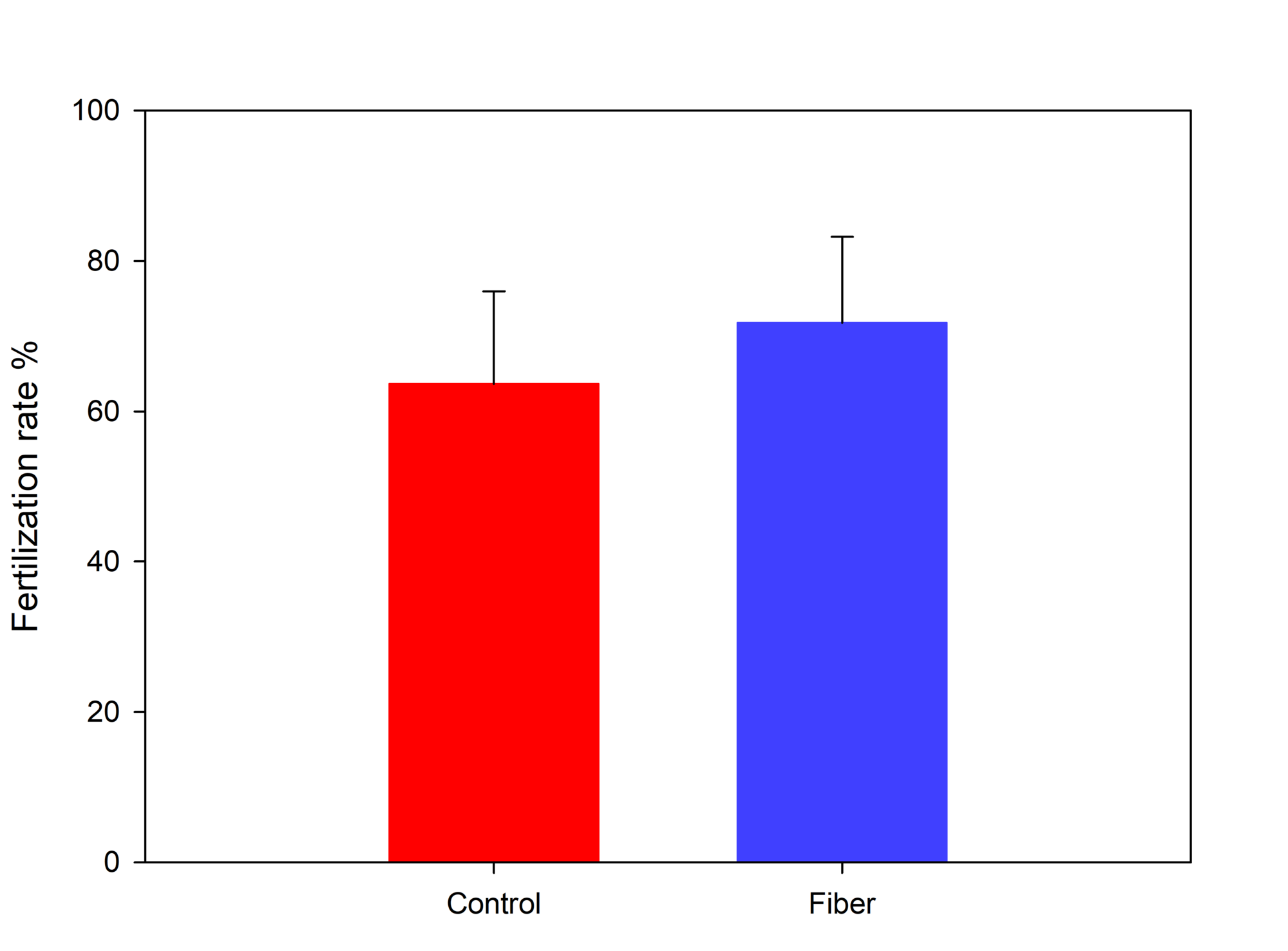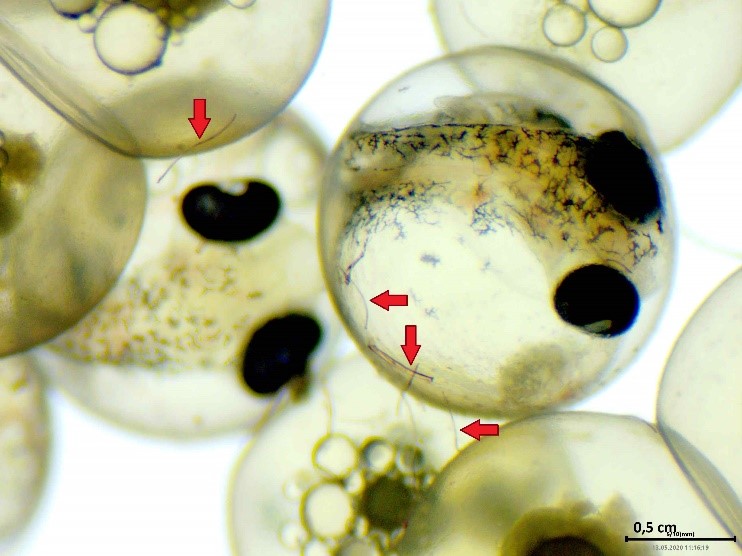Microplastic fibers in water do not alter the development of fish eggs
Micro plastic fibres from textiles are very abundant in many aquatic habitats, which rises concerns about their possible negative impact on sensitive biological processes such as reproduction of fish. Therefore we tested experimentally if micro plastic fibres in water influence fertilization and development of fish eggs.

Micro plastic fibres in water did not change fertilization and hatching rates of stickleback eggs.
Heart bead rates of stickleback larvae were not altered after embryonic development in water with micro plastic fibres.
As part of the project PlasM, funded by the BMEL, it was tested experimentally if microplastic fibres in water possibly alter fertilization and hatching rates of stickleback eggs. Both, fertilization rates and hatching rates were equally high in water with and without micro plastic fibres. Even though fibres attached to the egg shells (Fig. 1), embryos developed as good as in the controls without micro plastic fibres. After hatching, larvae from the micro plastic fibre treatment did not show alterations of their heart bead rates, which may occur as a consequence of a lack of oxygen during embryonic development. We conclude that concentrations of micro plastic fibres as currently recorded in aquatic systems are not harmful for the development of fish eggs.
Publications
- 0
Bunge A, Kammann U, Scharsack JP (2021) Exposure to microplastic fibers does not change fish early life stage development of three-spined sticklebacks (Gasterosteus aculeatus). Micropl Nanopl 1:15, DOI:10.1186/s43591-021-00015-x

![[Translate to English:] [Translate to English:]](/media/_processed_/2/9/csm_Embryo-Exp_Gelege_9F_dpf5-200513111619_c8534a8199.jpg)
![[Translate to English:] [Translate to English:]](/media/_processed_/2/9/csm_Embryo-Exp_Gelege_9F_dpf5-200513111619_9027994d44.jpg)

![[Translate to English:] Logo des Bundesministerium für Ernährung und Landwirtschaft](/media/allgemein/logos/BMEL_Logo.svg)